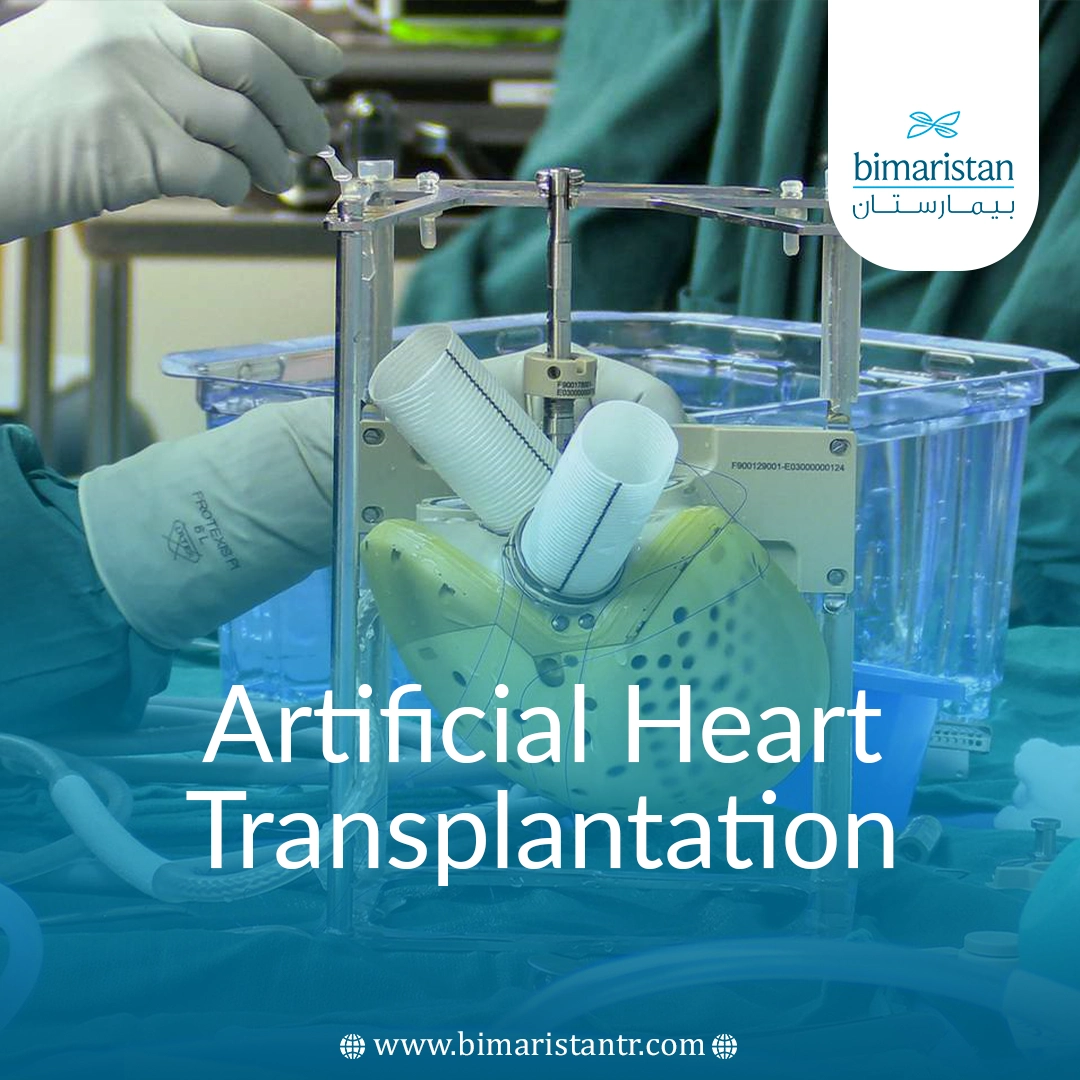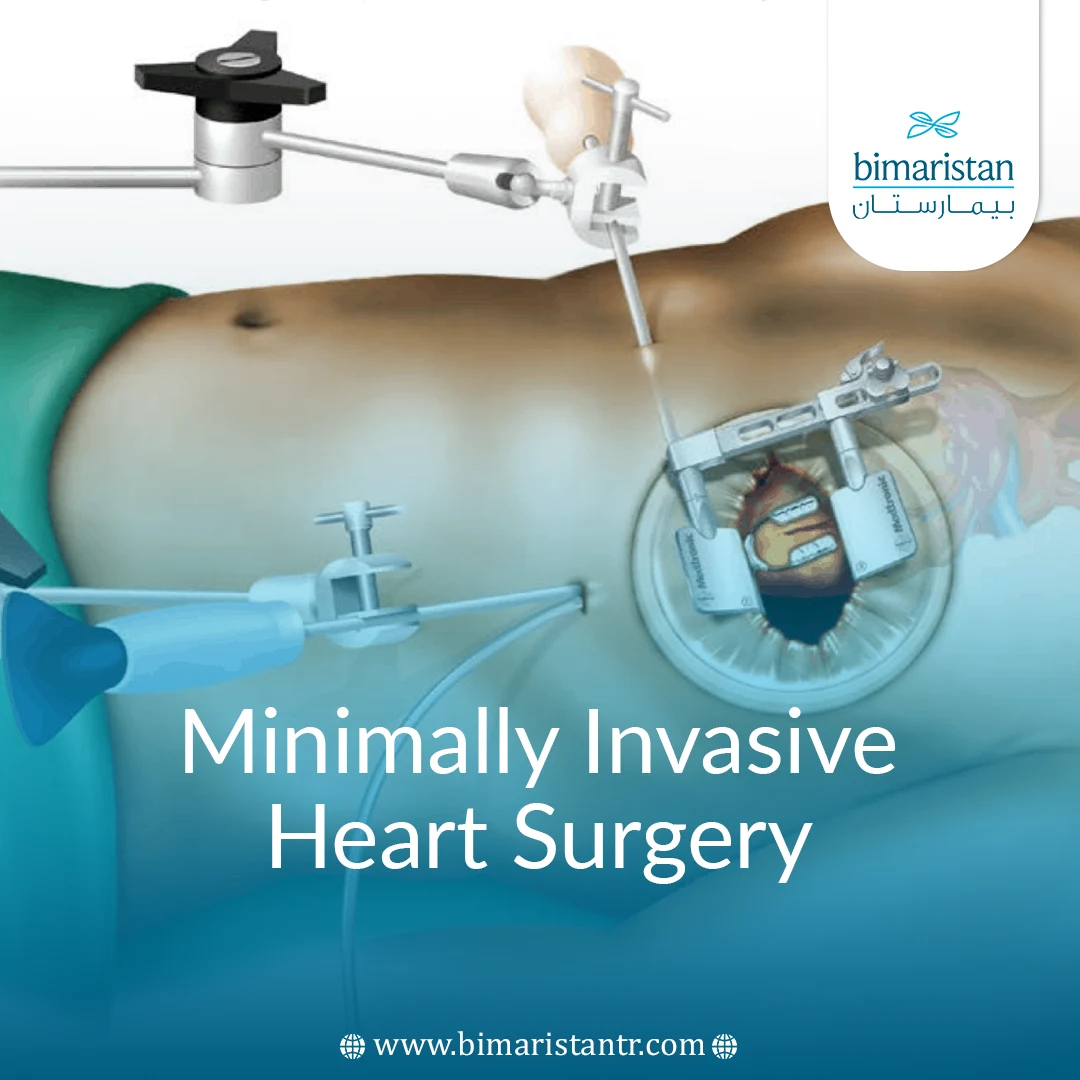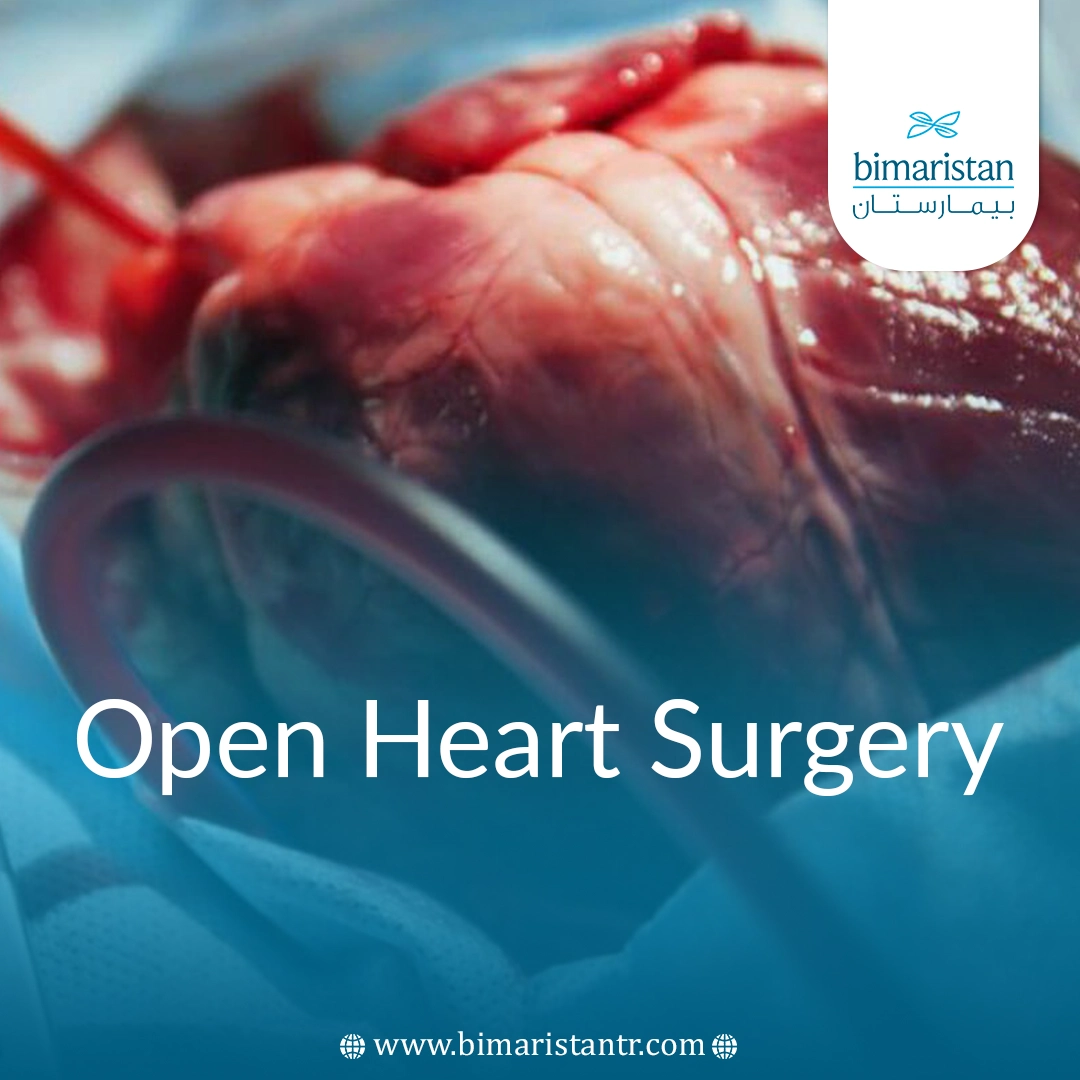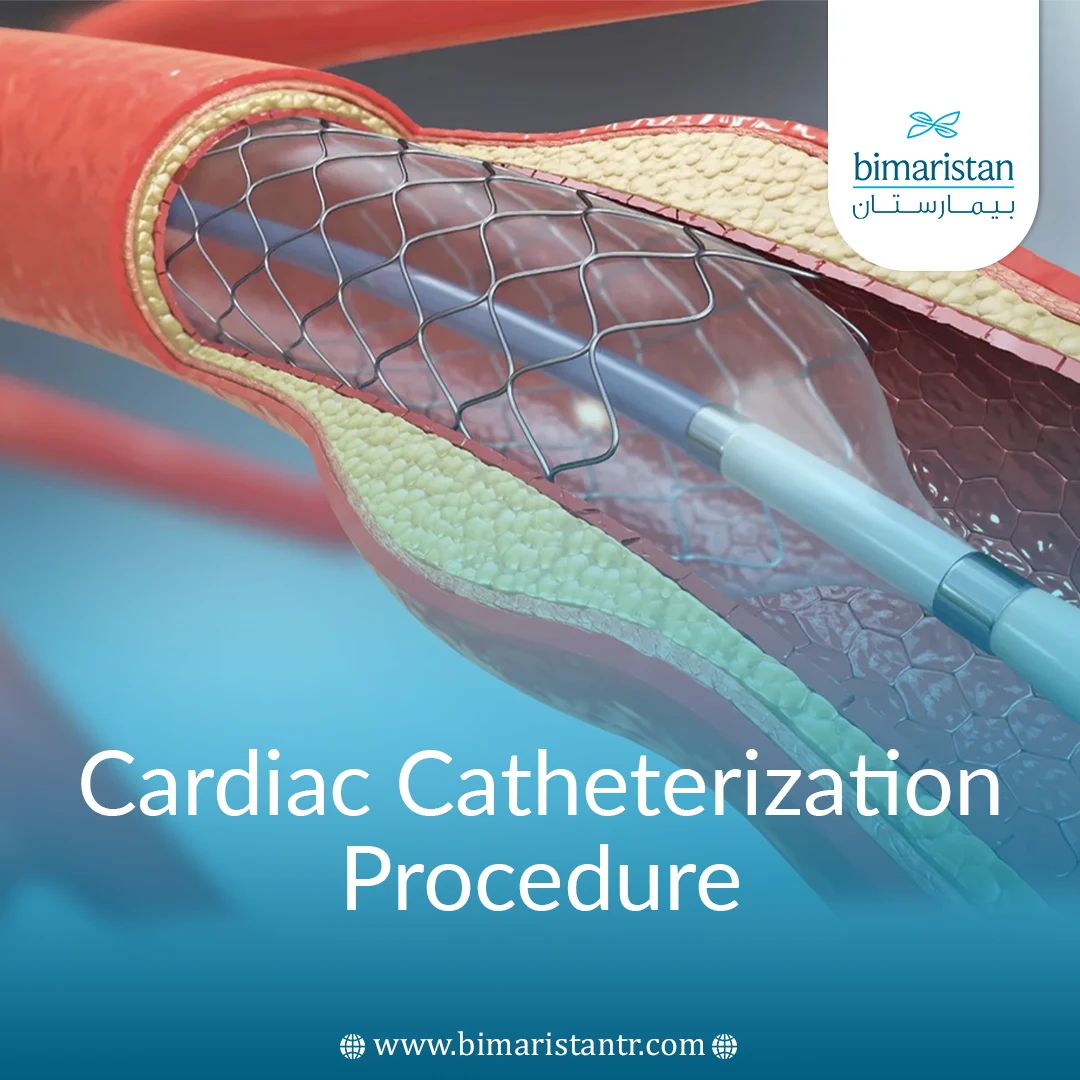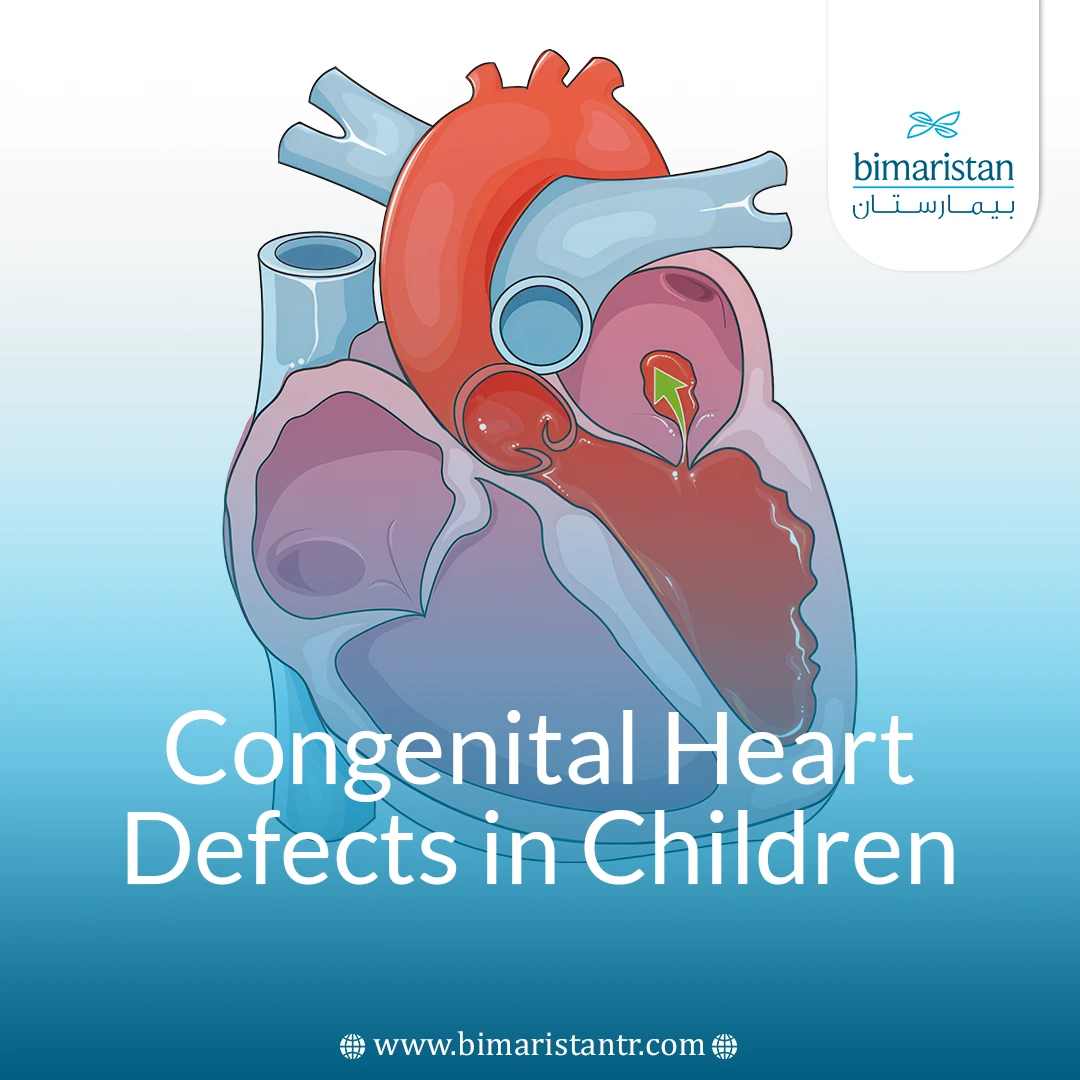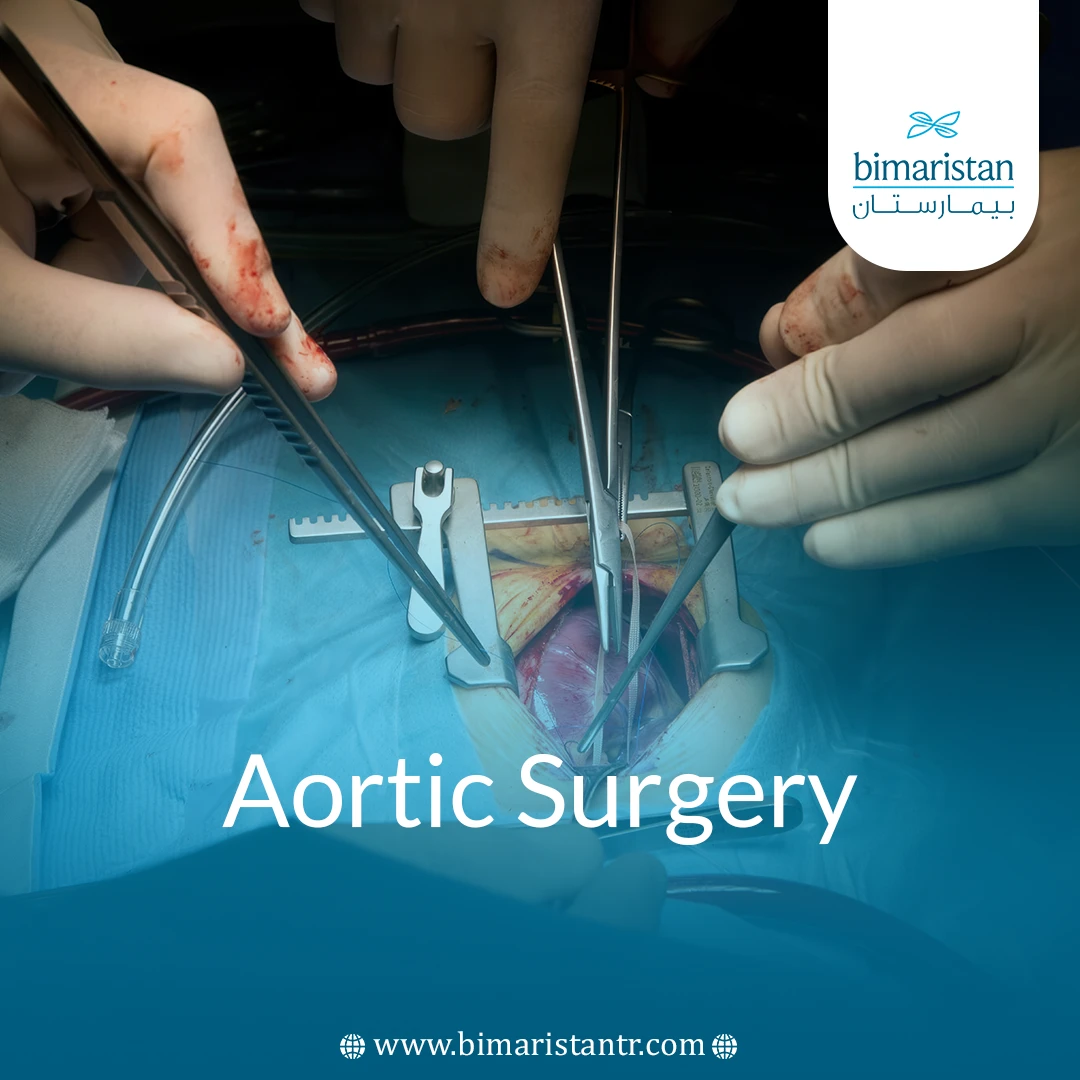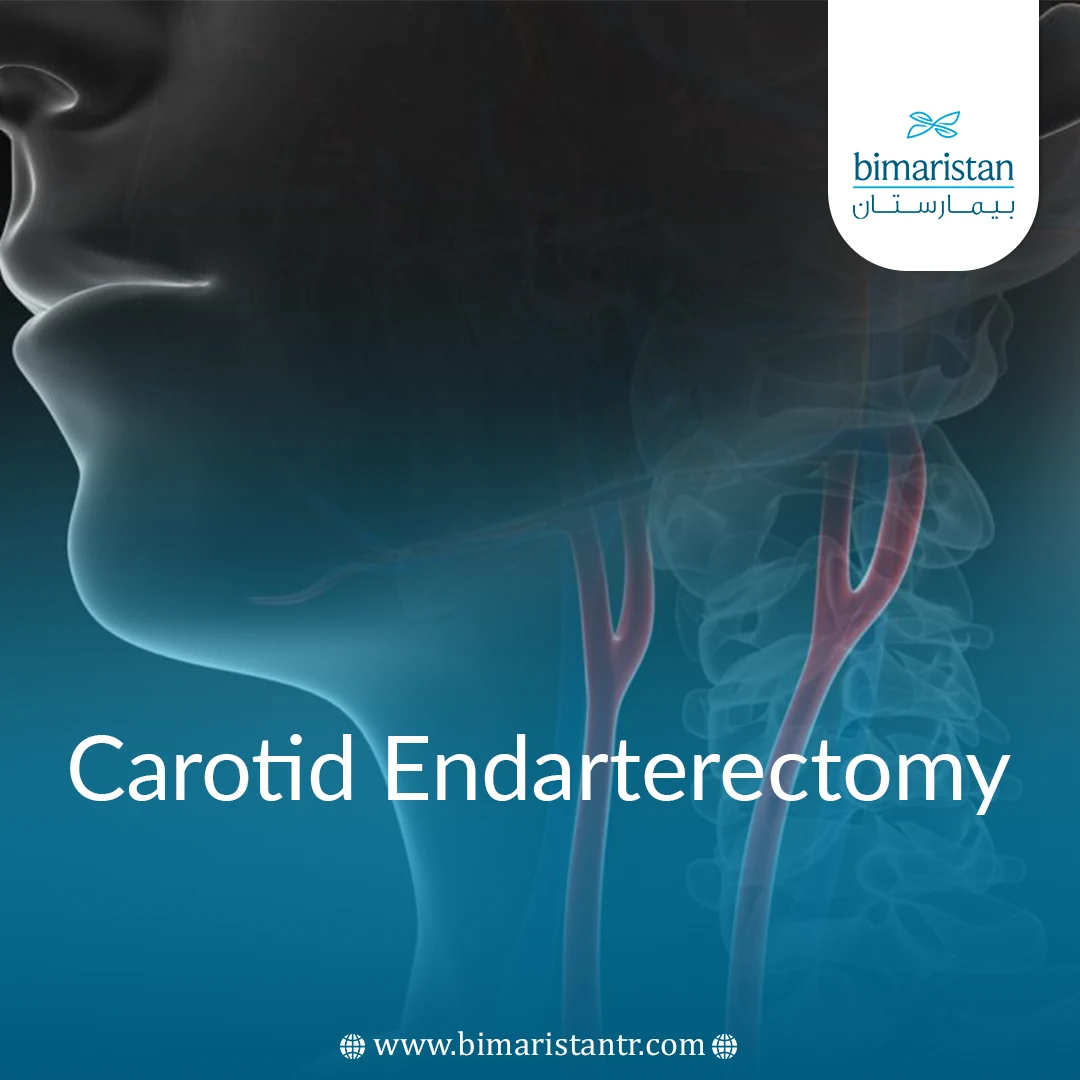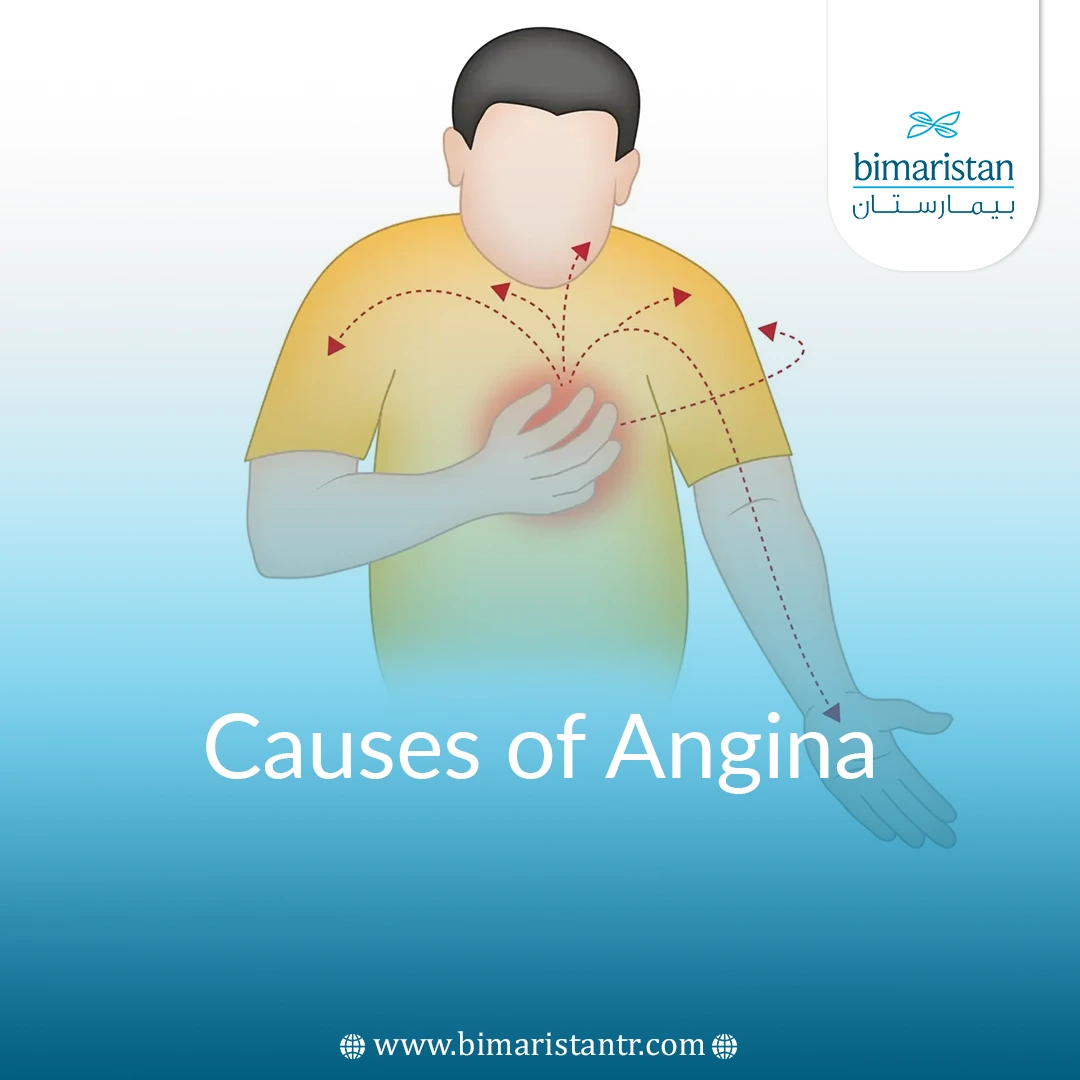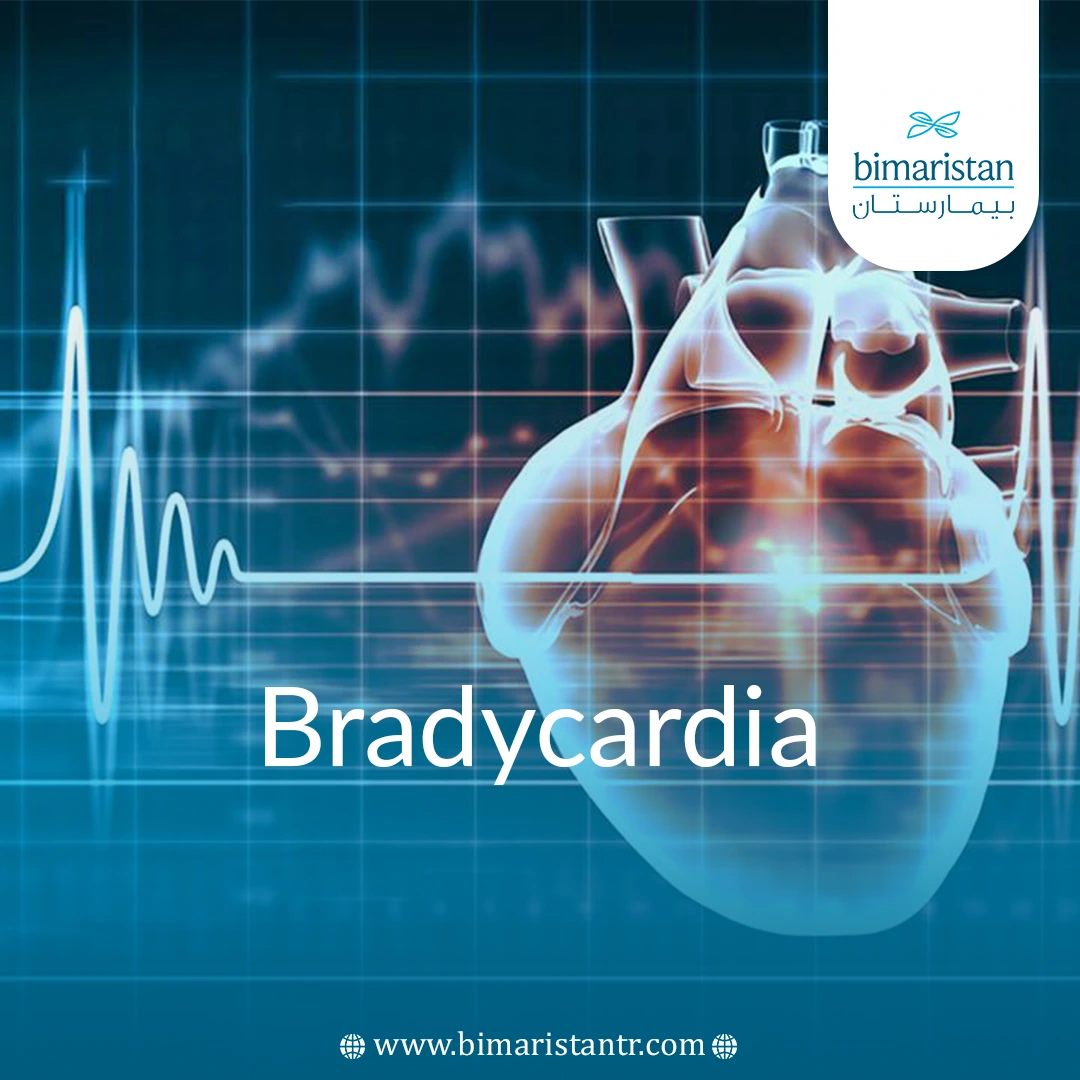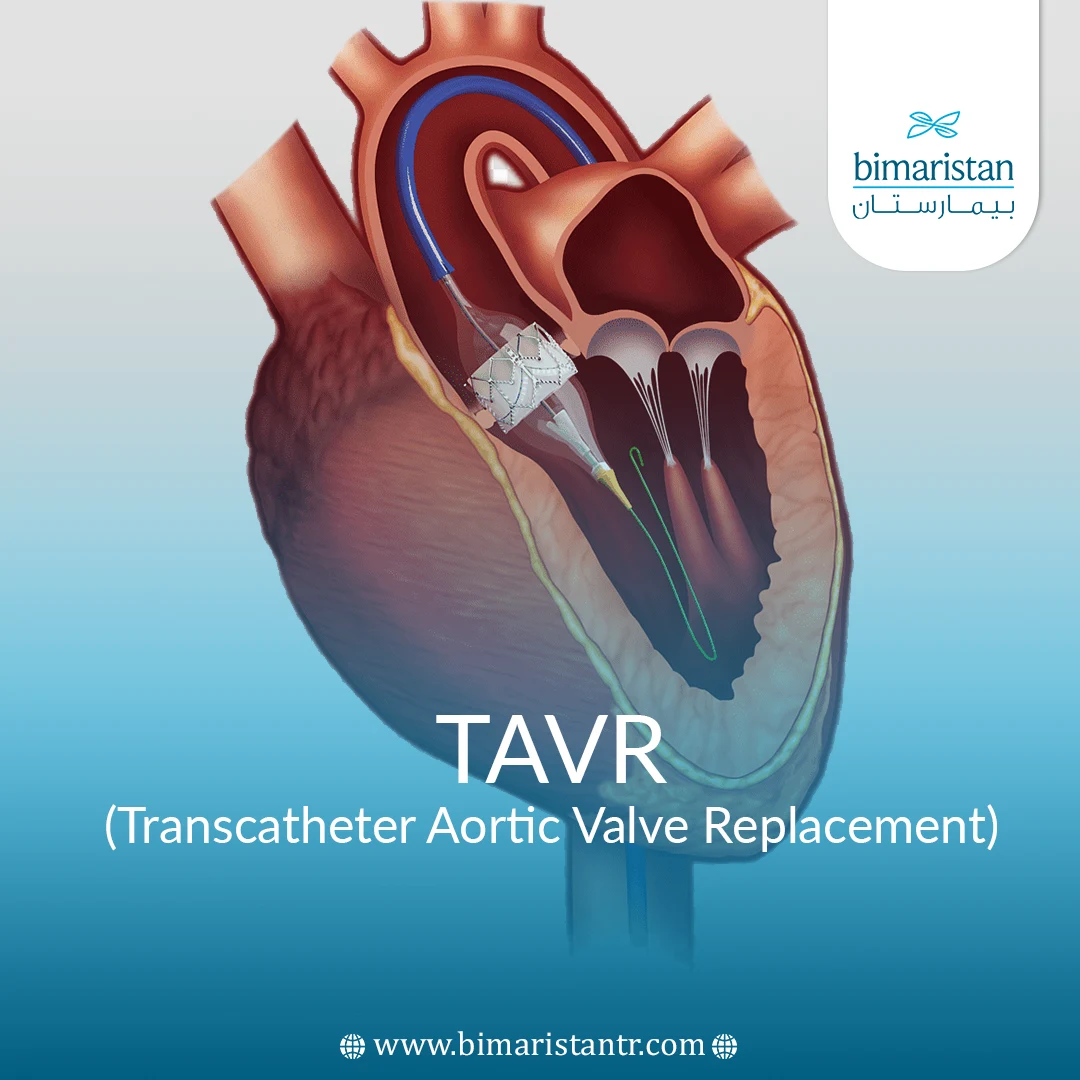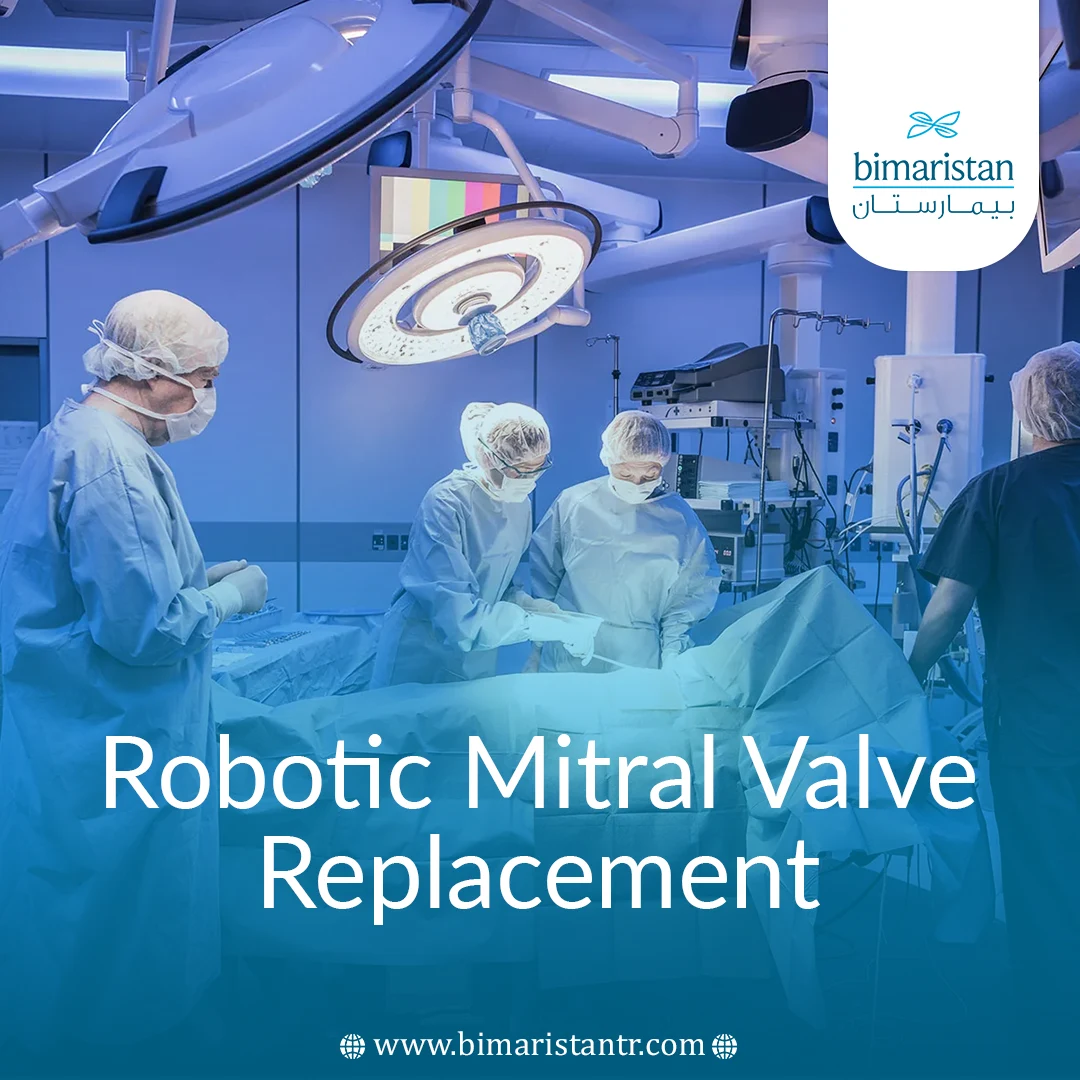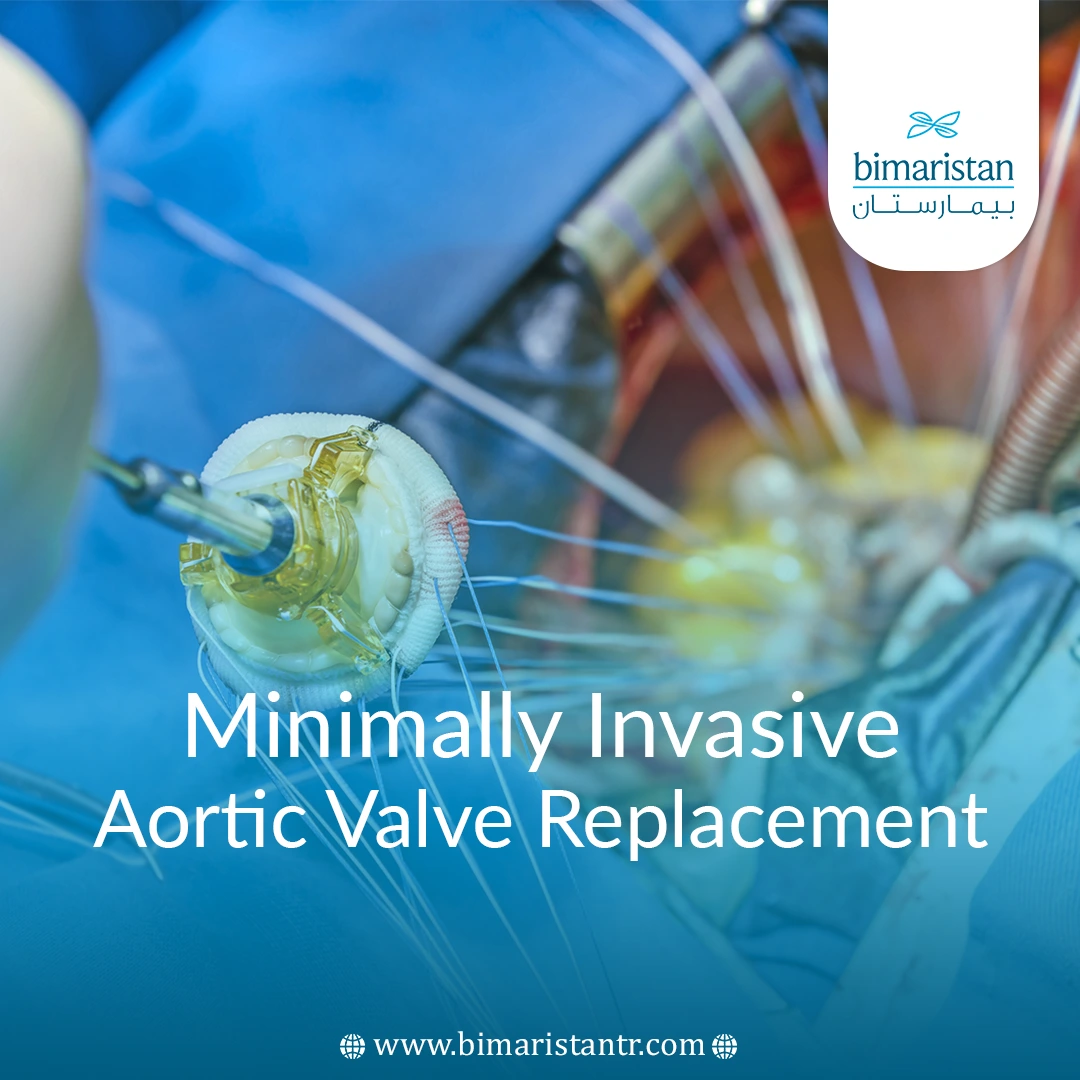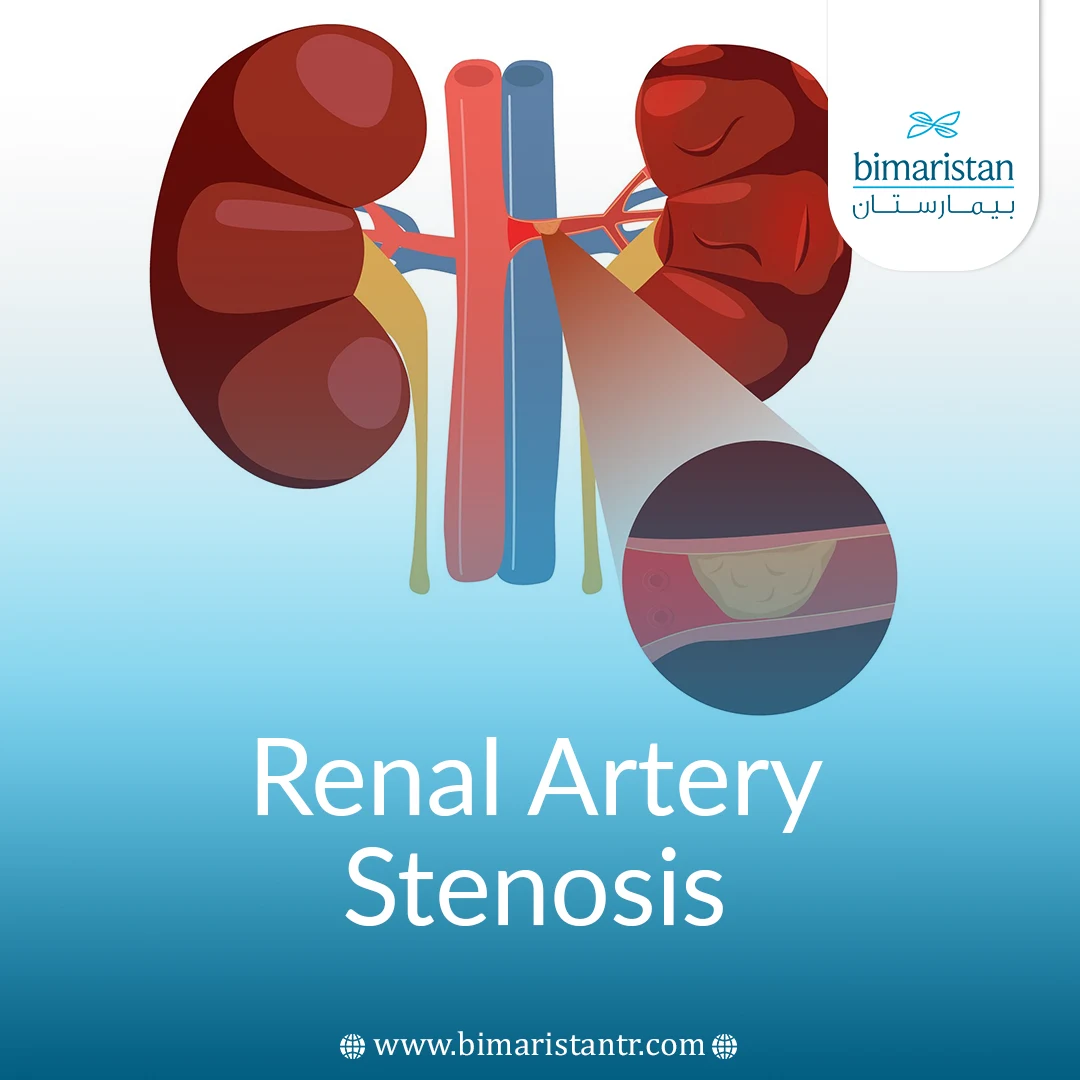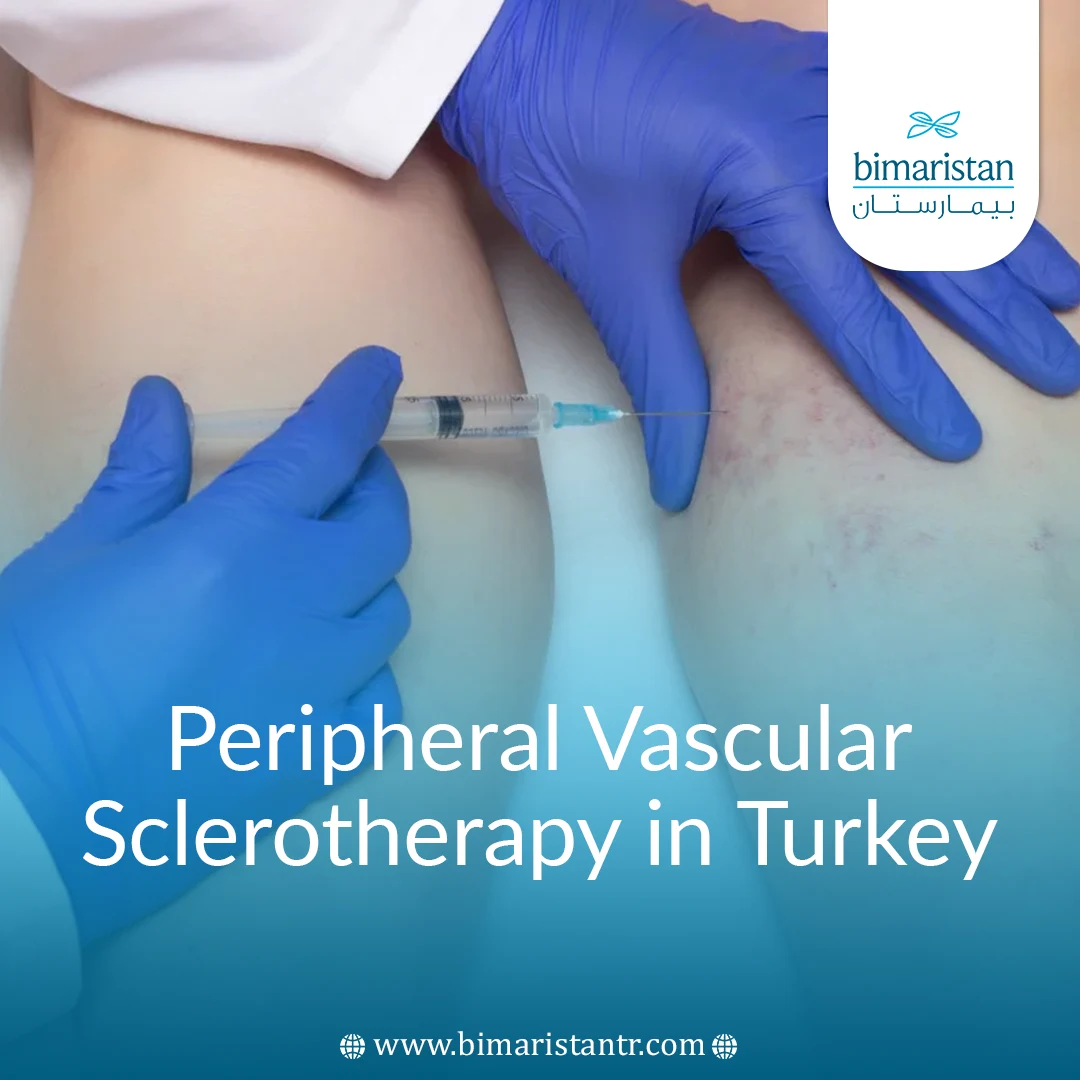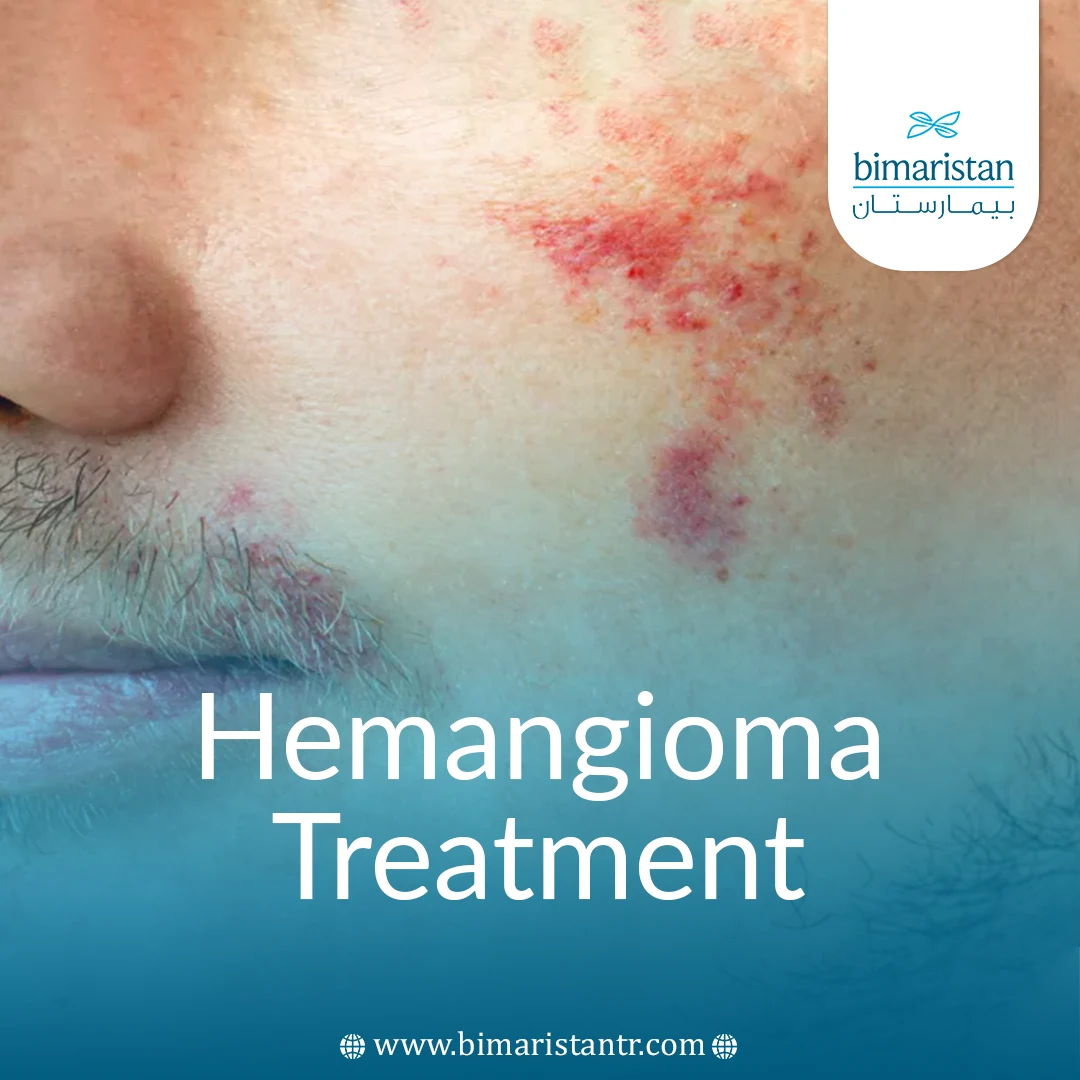
Cardiovascular surgery
Cardiovascular surgery centers in Turkey aim to provide medical services to patients worldwide using various modern techniques. These include open and minimally invasive heart surgeries, vascular surgeries, catheter-based techniques. Robotic surgery techniques are also used in adult cardiac and vascular surgeries. High-risk patients are treated through multidisciplinary approaches and modern technological methods.
Benefits of cardiovascular surgery in Turkey
Turkey is distinguished by its leading hospitals specializing in cardiovascular surgery. Thanks to its skilled doctors, these hospitals have achieved numerous world-recorded achievements.
The cardiovascular surgery team in Turkey performs surgeries without touching the sternum or stopping the heart (thereby reducing surgical risks).
Cardiovascular surgery centers in Turkey offer options such as robotic assisted heart surgery and minimally invasive direct coronary artery bypass (MIDCAB), which provide surgical access to the heart through smaller incisions than other surgical techniques. MIDCAB is also known as “keyhole surgery.”
In addition to performing surgeries, these centers conduct scientific and academic research to raise awareness about heart health.
Cardiovascular Surgery Procedures in Turkey
Open Heart Surgery
This is one of the most important procedures performed in cardiovascular surgery. It involves opening the chest bone with a surgical incision approximately 20 to 25 cm long. Despite being one of the oldest surgical methods, it is carried out with a large medical team.
Patients also bear significant burdens to avoid surgical complications, which often develop due to cutting the chest bone. Patients must protect their chest wall until their bones heal completely. The hospital stay is longer with this method. One of the surgical procedures performed in this way is coronary artery bypass surgery. This surgical operation has certainly contributed to improving the quality of life for a large number of patients and can be performed with a very low margin of risk.
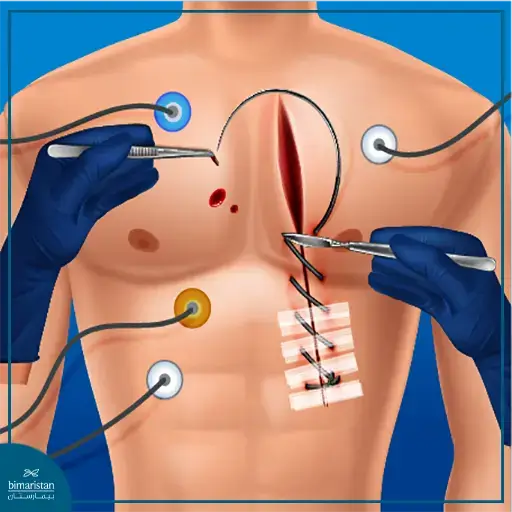
Robotic Heart Surgery
Cardiovascular surgery can be performed using robots, where surgery is performed through three 8 mm holes plus an incision of 2 to 4 cm. Robot arms have high movement capability, and the surgeon views the image in three dimensions, reducing bleeding and infection rates through robotic surgery. Robots can be used in surgeries such as coronary artery bypass grafting, repair or replacement of the aortic valve, repair and replacement of the tricuspid valve, atrial septal defect correction, and clot removal.
The surgeon sits at the control unit and moves the robotic arms connected to cameras that magnify the internal image ten times in three dimensions, displaying it on the screen. This allows the surgeon to perform precise surgery using robotic arms, without leaving any scars on the patient.
Aortic Aneurysm Surgery
Aortic aneurysm surgery aims to repair or replace the dilated part of the artery, where dilation can occur when the inner walls of the artery weaken and blood pressure presses on the artery walls. The abnormal swelling that develops as a result of this condition can tear and lead to life-threatening conditions, affecting blood vessels in any part of the body.
With recent developments in the treatment of aortic aneurysms, the risk associated with undergoing aneurysm surgery has decreased to less than 5%. As a result, surgical treatments are preferred over drug treatments in most cases.
There are two main methods for performing aortic aneurysm repair surgery in the field of cardiovascular surgery:
- Open Surgery: Open chest surgery or open abdominal surgery is the most common type of aortic aneurysm repair surgery involving an incision in the area to expose the artery. Through this incision, the surgeon can work on the artery. Aortic aneurysm repair using the open method involves replacing the weakened part of the artery with a graft or tube, and the operation can take between two to six hours, with hospitalization sometimes lasting up to a week after surgery.
- Endovascular Surgery: Endovascular aneurysm repair surgery (EVAR) is a less invasive alternative to traditional open surgery involving small incisions. The surgeon uses these incisions to pass a catheter into the artery, where the catheter carries a specific stent left in place to the dilated position. As a result, blood flow does not exert additional pressure on the weak aortic walls or increase swelling, and depending on the amount of swelling in the artery, the surgeon may use a stent graft. The patient may need to stay in the hospital for a day or several days after the procedure.
Treatment of Raynaud’s Disease and Peripheral Arterial Narrowing
Raynaud’s syndrome is a common medical phenomenon characterized by frequent bouts of vasoconstriction in the blood vessels in the fingertips and toes.
Surgery or injections may be required to treat acute cases of Raynaud’s disease.
- Nerve Surgery: Nerves in the hands and feet control the expansion and narrowing of blood vessels in the skin. These responses stop when cuts occur in these nerves during surgery. In this surgery, the doctor removes small nerves surrounding blood vessels by making small incisions in the affected hand or foot.
- Chemical Injections: Drugs or botox injections can stop the action of nerves in the affected hands or feet, and some people may need these injections more than once if their symptoms are persistent or if they recur.
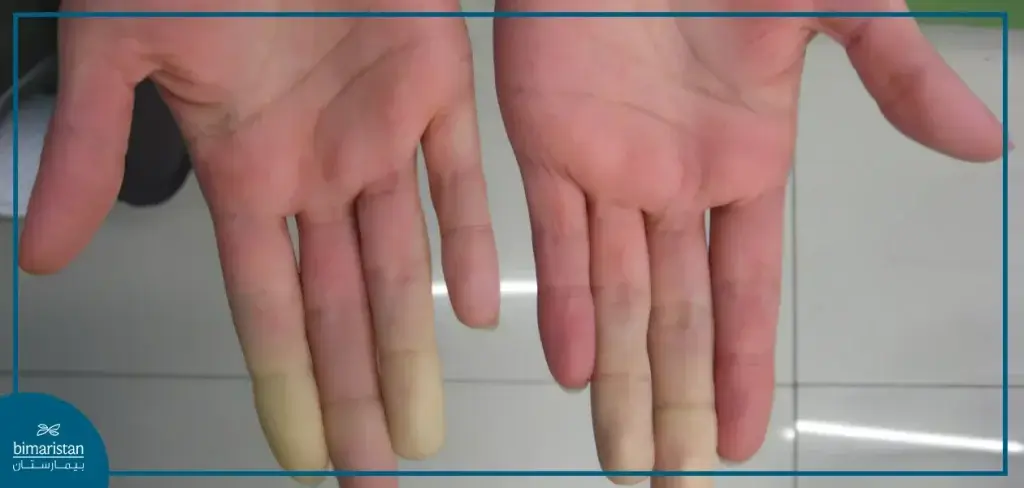
Coronary artery bypass grafting surgery
Coronary artery transplantation aims to deliver blood to the coronary arteries in the heart that have severe blockages. The patient needs to undergo this surgery when drug treatment is insufficient.
Coronary artery bypass grafting and stent placement are two different methods for treating coronary artery insufficiency in the heart. The doctor determines which of the two methods is better according to the patient’s health condition.
Coronary artery bypass grafting surgery is considered one of the most common heart and chest surgeries, with a high success rate of up to 98%. Research has shown its effectiveness in eliminating angina pain, reducing the possibility of heart attacks, and prolonging the patient’s life.
The surgery is performed in cardiovascular surgery centers in Turkey. It lasts, on average, 4 to 6 hours, and the surgeon determines the number of arteries targeted. The surgeon transplants healthy blood vessels from another part of the body (often including the left mammary artery and the saphenous vein in the foot) onto the blocked heart arteries to deliver blood to the affected part.
After surgery, the patient stays in the hospital for some days based on his health condition and the doctor’s decision (usually 5 to 7 days between surgical intensive care and the hospital’s inpatient department). The patient usually lives normally and drives a car 6 to 8 weeks after surgery.
Heart valve replacement surgery
In most cases, valve replacement surgery requires open-heart surgery, which means the surgeon opens the chest and then opens the heart to remove the damaged valve. Sometimes the valve can be changed by making a small incision near the sternum or under the right pectoral muscle.
Studies have indicated a high success rate of heart valve replacement surgery. The five-year survival rate after the operation was 94% for the aortic valve and 64% for the mitral valve.
Arterial bypass surgeries
In arterial bypass surgery, a blood vessel is removed or redirected from an area of the body, and it is placed around the area or areas of narrowing to bypass the blockages and restore blood flow to the heart muscle. There are several types of arterial bypasses depending on the target artery:
Minimally invasive coronary artery bypass surgery
Minimally invasive coronary artery bypass surgery (also known as beating heart surgery) is a minimally invasive alternative to some other types
Minimally invasive bypass surgery can improve blood flow to the heart without potential complications, without the use of a cardiopulmonary bypass machine and the long recovery time associated with traditional open-heart coronary bypass surgery. It is of two types:
- Minimally invasive direct coronary artery bypass grafting (MIDCAB)
- Off-pump coronary artery bypass grafting (OPCAB)
Aortic bypass surgery
Artificial tubes (grafts) are placed near a blocked or narrow blood vessel, creating a pathway so blood can move around the blockage. In this case, the grafts are placed over the course of the aorta and the iliac or femoral artery.
Aortic bypass surgery with both femoris is also called aortic bypass surgery because it involves an inverted “y.”
Laparoscopic heart surgery
Among the most important operations performed in the Department of Cardiovascular Surgery, laparoscopic heart surgery, or what is called “Minimally Invasive Heart Surgery,” is considered one of the modern techniques in the world affiliated with the Department of Cardiovascular Surgery, which has allowed many operations to be performed on the heart. Without causing significant deformation of the chest wall and adjacent structures of the heart.
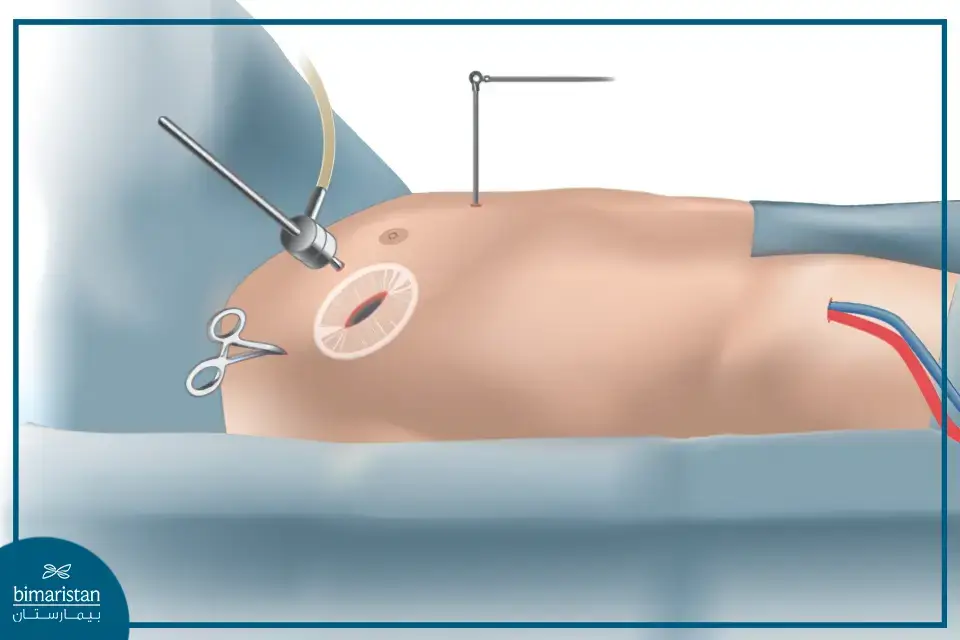
Central venous catheter installation
Catheter implantation surgery is usually performed under local anesthesia. An incision is made on the skin under the collarbone, and the catheter is inserted into the vein under the collarbone. The thin tube is pushed toward the heart, which is done under fluoroscopy to reach the correct location. The portal catheter chamber is inserted into the periphery of the heart (it is a reservoir through which the agent to be introduced is gradually transferred through the catheter to the periphery of the patient’s heart).
The catheter can then be withdrawn from the vein at its end through the subcutaneous tissue into the central port reservoir and connected there. After carefully checking whether the port really works as a whole, the skin is finally sutured.
Cardiac catheterization procedure
Cardiac catheterization is an imaging procedure of the arteries that feed the heart muscle, called the coronary arteries, and it has two goals or two types: diagnostic catheterization and therapeutic catheterization.
Cardiac catheterization can be performed from the hand and thigh symmetrically, depending on the doctor’s choice. First, a plastic sheath is inserted into a blood vessel in the arm or thigh, and then a catheter is inserted through the sheath and into the arteries of the heart.
When the cardiac catheter is in place, the lights will be dimmed, and a small amount of contrast material will be injected through the cardiac catheter into the heart’s arteries. The contrast material will outline the vessels and valves.
Transcatheter aortic valve replacement (TAVR)
This operation is performed when the valve is damaged or unable to perform its function as required, and it is often performed in patients with aortic stenosis.
Through this small operation, a new heart valve is placed over the affected valve, and a new valve is obtained without major surgery.
The angiologist inserts a cardiac catheter from the femoral or radial artery, which does not require a surgical incision in the chest. Interventional radiology accesses the valve, and an artificial valve is placed in place of the old valve. Once the new heart valve is placed, the angiologist removes the old valve to replace it in regulating blood movement (valve-within-a-valve process).
Sclerotherapy Treatment for Varicose Veins in Turkey
It is a method used to remove varicose veins that are one millimeter in size or smaller by inserting a very thin needle into the affected vein and injecting a medication that hardens the vein. These medications damage the inner wall of the affected vein, causing it to close.
Heart stent installation procedure in Turkey
The stent or mesh is a metal device in the shape of a small tube that is placed inside the blocked artery to expand it. Installing a heart stent is done through a process known as coronary catheterization. The catheterization is performed by inserting a long tube through the vessels of the leg or hand until this tube reaches the arteries of the heart. The catheter tube is guided with the help of X-rays so that the doctor can reach the coronary arteries and then install the stent inside the lumen of the narrowed artery by expanding it with a balloon to keep it open until the stent is placed.
The heart stent improves blood flow, which relieves the symptoms of shortness of breath and chest pain. In addition, the stent reduces the risk of sudden cardiac arrest (stroke) and usually prevents the artery from narrowing again.
Transcatheter repair of ventricular septal defect in Turkey
Transcatheter repair of ventricular septal defect (VSD) uses a flexible tube called a catheter. This tube contains a small, umbrella-shaped device. The doctor inserts the tube through the femoral artery into the heart, reaching the wall between the ventricles. The small device is then released and used to close the hole in the wall; the tube is removed from the body. Catheter repair usually results in less recovery time than the open approach.
Peripheral arterial catheterization procedure
The doctor uses a medical balloon to expand blocked peripheral arteries affected by atherosclerosis. The balloon applies pressure to the artery’s inner wall to open up atherosclerosis and improve blood flow. A metal stent is often placed via a catheter through the artery wall to prevent the peripheral arteries from narrowing again.
Catheter vasodilation to treat diabetic foot
The doctor resorts to this operation to open blocked arteries in the foot, as the operation aims to detect the location and then treat it.
During the procedure, the doctor inserts a thin catheter tube into the narrowed part of the arteries, then a balloon is placed to expand the area and improve blood flow, then a stent is installed in the arteries to ensure that they do not become clogged again.
Laser treatment of blood birthmarks
This method is considered applicable in cases of superficial birthmarks; that is, the targeted vessels must be at the level of the skin, as the heat generated by the laser treats blood birthmarks. The good thing is that these rays do not cause any harmful effects where they are applied.
The doctor determines in advance the area that should be targeted by the laser. The affected vessels absorb the thermal energy generated by the laser, causing a cauterization process (cauterization of the vessels) in the areas where the hemangioma has spread. The birthmark gradually diminishes within 10 to 15 sessions until it disappears completely.
According to a study conducted, the possibility of successful treatment in superficial birthmarks if treatment is started early, 25.9% of patients achieved a 100% cure and 41.1% showed an improvement of 76% to 99%.
Robotic mitral valve replacement
It is considered the least invasive technique in the chest, in which the mitral valve is changed through 2-4 small surgical incisions 1-2 cm long to insert robotic arms that the surgeon controls via a special computer in the operating room.
A three-dimensional image of the heart and mitral valve is displayed on this computer, allowing the surgeon to perform the operation by looking at the screen and controlling the robotic arms remotely. A cardiopulmonary bypass machine is also inserted through a small incision in the groin to stop the heart.
Post-cardiovascular surgery care and cardiac rehabilitation therapy
Each person recovers differently after surgery, but there are some common characteristics that all patients after cardiovascular surgery have:
In the first days after cardiovascular surgery
Studies confirm the importance of having an adult with the patient during the first week, along with the importance of continuous rest throughout this period.
In the first weeks after cardiovascular surgery
You must follow and wait to return to the normal routine and achieve balance. The patient may go through good days in which he feels positive and is making progress, but there may also be bad days in which the patient feels frustrated, irritable, or crying. The patient may also notice a loss of concentration or short-term memory.
The rehabilitation program after cardiovascular surgery in Turkey includes:
- A practice tailored to the individual needs of the patient
- Information and discussion sessions on how to maintain heart health and prevent further complications
- Stress management and relaxation
- Support from health professionals and patients with similar heart conditions
- Cardiac rehabilitation nurses can provide support to the patient’s family
The best hospitals for cardiovascular surgery in Turkey
Turkey is distinguished by the presence of a prestigious group of hospitals and centers for cardiovascular surgery:
- Medicana Hospital
- Memorial Hospital (Sisli)
- Akdeniz University Hospital
- Yeni Mahalle Training and Research Hospital
- Memorial Hospital (Bahcelievler)
The most famous cardiovascular surgeons in Turkey
Turkey is distinguished by the presence of a large group of doctors in the Department of Cardiovascular Surgery:
- Professor Dr. Ismail Arden
- Prof. Dr. Batuhan Ozay
- Dr. Hasan Erdal
- Dr. Burak Kiran
The approximate cost of cardiovascular surgery
Cardiovascular surgery costs range from 7000 to 50000 $, depending on the type of surgery, complexity, and precise diagnosis determined by the patient
Advanced diagnostic and treatment techniques in cardiovascular surgery centers in Turkey contribute to reducing risks and improving treatment outcomes, making it possible for patients with serious heart diseases to rebuild hope and life.

